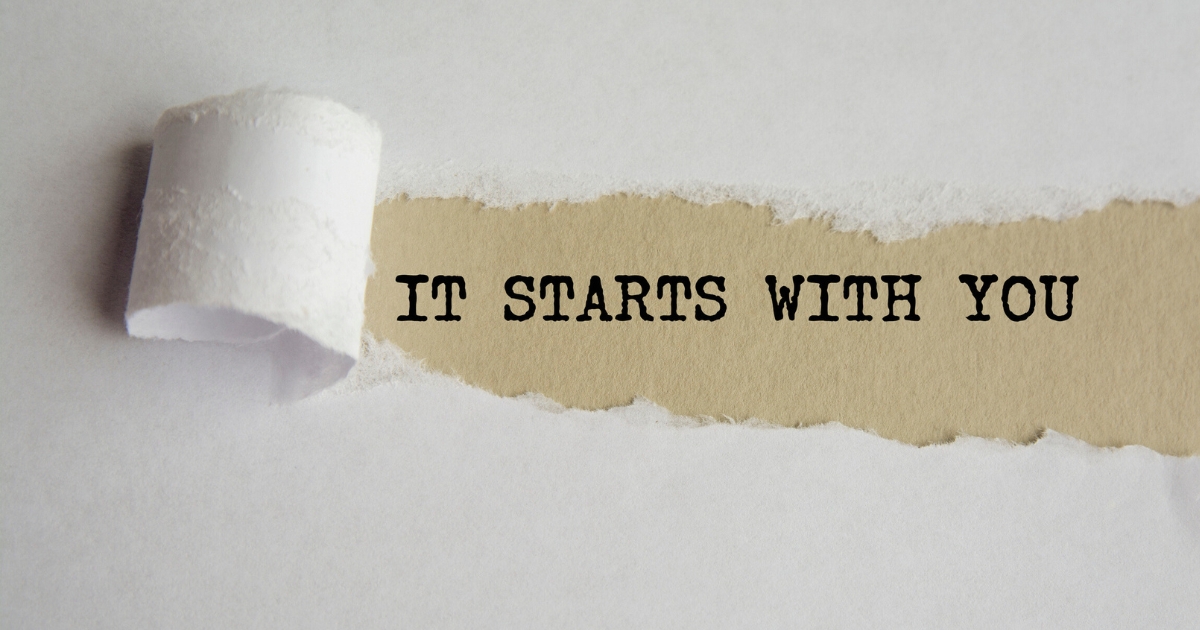While the initial realization that there is a problem and the decision to seek help can be among the most difficult parts of recovery from alcohol use disorder (AUD) or substance use disorder (SUD), staying in recovery can pose its own challenges. Becoming sober can be a scary thought for someone who has relied on substances for so long, and staying sober is a process that requires guidance, support, and fortitude. That’s why the founders of Alcoholics Anonymous (AA) created this iconic 12-step program. Together, The Twelve Steps of AA serve as a guide for navigating recovery as well as helping others walk a similar path.
The twelve steps of Alcoholics Anonymous can be valuable both during and after recovery. Still, it’s important to realize that these steps do indeed work, so long as you work them. Simply memorizing them without putting in any effort to work them isn’t effective; it’s important to learn how to live out these steps. Here’s a brief guide to using the twelve steps.
What Is the Basic Concept of a 12-step Program?
The basic idea of a 12-step program is to guide individuals who wish to recover from AUD or SUD via a peer support and mutual aid format. The steps outline how people can work together to find recovery from addiction, continue to resist urges and avoid triggers, and re-establish a fulfilling and healthy life. It’s important to note that these programs aren’t designed to simply help an individual find sobriety but to help them support others and repair relationships, as well.
It’s also crucial to understand that people following a 12-step program are not trying to rush through each step. A major component involves taking each day as its own challenge, one day at a time, instead of focusing on what you did in the past or what you may do tomorrow. It’s not a race to recover from SUD as soon as possible; it’s about taking the time you need to get the most out of this process.
What Are the 12 Principles of AA?

Let’s discuss each step of AA’s 12-step program individually as we evaluate the intent behind each and how you can make them as effective as possible. While some of them may seem easy enough to understand, there’s something to gain from each one that you may not have realized before. Since AA places such a focus on what you can do one day at a time for recovery, you’ll find some “just for today” quotes that can help illustrate how to navigate certain steps.
Step 1: Admit You Have No Power Over Alcohol and That It’s Made Your Life Unmanageable
For individuals who wish to become sober, admitting they need help is often one of the hardest parts of the entire process. Those of us in recovery know what it’s like to worry that others will judge us based on past decisions, but the benefits of a life in recovery are too important to continue living a life in addiction. If we can admit we need help when life becomes too much for us to handle, there will always be someone willing to help at AA. That’s because many of us now use our experience asking for help with AUD to inspire others to do the same.
Step 2: A Power Greater Than You Can Help Restore Your Life Outside of Addiction
AA was founded on faith-based principles, and this step encourages us to have faith that there is a path forward. However, it’s important to note that anything you wish can be considered a “higher power.” Whether your higher power is God, Mother Nature, the universe, Buddha, or something else, something greater than ourselves can help us see life differently and become accountable for our actions. When we learn this through 12-step programs, we can learn to accept guidance from a higher power whenever we have the urge to turn to harmful substances.
Step 3: You Must Decide to Turn Your Life Over to Your Higher Power
Once we’ve accepted that a higher power can guide us through recovery, we then officially surrender to that power. If you truly do believe that a higher power can help you through what may be your darkest point in life, this step encourages you to rely on that power. Most AAers find that this step truly is beneficial once they recognize they need help, know that a higher power can help them, and let it guide them toward a hopeful and promising future.
Step 4: Make a Deep, Honest Personal Inventory
Recovery isn’t about making one decision or doing one thing that makes you stop using substances. Instead, it’s a long process that lasts the rest of our lives. For step four, it’s crucial that you look inward and truly ask yourself some questions. What behaviors and patterns have kept you in a cycle of substance use? What do you wish to gain out of life? What are your intentions? What mistakes have you made? Where do you need improvement? These questions can be different for everyone, but these should be asked before, during, and after recovery.
Step 5: Admit Your Mistakes to Your Higher Power, Yourself, and Someone Else

Along with admitting we need help, this is one of the hardest steps of this process. Being honest takes commitment, integrity, and courage. The more you can be truthful about what has happened due to your decisions, the easier it will be to accept the support of others. It’s impossible to be helped by those who care for you if you aren’t honest about what your struggles were. Don’t be ashamed to admit exactly what you’ve done wrong.
Step 6: Become Ready to Have Your Higher Power Remove Your Defects of Character
This one is simple to understand but not easy to do. We need to accept ourselves, but also acknowledge that character defects have led us to harm ourselves and wrong others – then, we need to ready ourselves to have a higher power help us remove these defects. To do so, its crucial to not only explore these character defects and the actions or behaviors they led to, but also become humble enough to admit that there are defects and that you can’t rectify them on your own.
Step 7: Humbly Request That Your Higher Power Remove Character Defects
When reading this step, you’ll notice that you must do this one “humbly.” If you go into this step believing only you can cure yourself of AUD and address your character flaws, this step will be much tougher to do. Remain modest and ask a higher power for guidance as you recover from SUD or AUD. Accepting that you need help and understanding that you don’t have everything figured out can help take pressure off of you.
Step 8: Create a List of All the People You’ve Wronged and Prepare to Make Amends
Think of people who you believe hurt as a result of your past actions. For example, you may have called someone names and severed ties with them in the midst of a drunken argument or stole money from a family member. Write down a comprehensive list of these people, and begin thinking of how you can make amends. Remember that you can take your time when composing this list.
Step 9: You Must Make Amends With Those You’ve Harmed Unless Doing So Would Cause Further Harm
Once you’ve thought it over, reach out and attempt to make amends with those on your list. Sometimes, the other person won’t accept your amends, and it may be inadvisable to reach out to someone you’ve traumatized, but it is crucial to make direct amends as often as possible. Making amends is critical for your own growth and healing, but it may help those you’ve hurt, as well. If you can put the work in to make amends and repair relationships, you may be able to reconnect with people and potentially have their support along your journey. Finally, letting go of your negative feelings or memories can help you focus on what you can do now and in the future.
Step 10: Continue Your Ongoing Personal Inventory and Admit When You’re Wrong

This step is one of our favorites because it reflects the entire journey of recovery so well. When we can admit to others that we were wrong, we then check back with ourselves and evaluate our progress. Admitting you’re wrong is difficult, and many AAers find it hard to do to this day. However, it’s also much easier to do after you’ve gone through the 12-step program. If you can truly examine how you’re doing and continue to admit you’ve been wrong before, both recovery and life become easier.
Step 11: Improve Your Contact With Your Higher Power and Continue to Seek Its Will
Everyone has something they can contribute to the world, but it’s up to you to seek a higher power’s guidance so you know what this purpose is. This step, much like the concept of a higher power, will look different for everyone, but it can be vital in helping you understand what you’re capable of and how you can help others. How do you think the universe means for you to contribute to its balance?
Step 12: Bring the Awareness Instilled in You Via AA to others with SUD and Practice These Principles in All Parts of Your Life
Your recovery process doesn’t end at step twelve. It’s now up to us to instill hope in others who may be struggling with what we’ve gone through in the past. Not only does this keep us on a positive path forward, but it helps us connect with those who may not have the support they need. When we form these connections, this allows those people to go through the program and eventually inspire their community. This keeps going, eventually leading to several people finding recovery.
Learn More About The Framework to Recovery

Anyone can benefit from the 12 steps and AA, no matter what their higher power may be and no matter their substance of choice. AA asks us to live out these principles throughout all phases of our lives, and we continue to practice them throughout lifelong recovery.
Need more information about 12-step programs like AA? Echo Recovery is a nonprofit education and recovery support organization committed to helping those seeking treatment for SUD. We know 12-step programs can be difficult to grasp at first, especially if you’re not accustomed to the thought of a higher power in your life. We hope this brief guide to the twelve steps has helped you determine how you could use these steps for every facet of your life – even if you need to view them in a different way. If you take each step seriously and truly dedicate yourself to healing, life without substances can become much more promising.
Contact us today to learn more about what we do and how we can help. Whether you’re looking to start your recovery journey or are ready to begin a 12-step program, remember to stay strong.
You’ve got this,
Jim
Resources :
- Alcoholics Anonymous Australia. (n.d.). The Twelve Steps. Retrieved from https://aa.org.au/members/three-legacies/twelve-steps/
- Alcoholics Anonymous. (n.d.). What Are the Twelve Steps and Twelve Traditions of AA? Retrieved from https://alcoholicsanonymous.com/what-are-the-twelve-steps-and-twelve-traditions-of-aa/
- Drug Strategies. (n.d.). Just for Today AA. Retrieved from https://www.drugstrategies.org/Addiction-Articles/just-for-today-aa
- Alcoholics Anonymous. (n.d.). The Twelve Steps. Retrieved from https://www.aa.org/the-twelve-steps

Experienced Chief Executive Addiction Recovery and Mental Health Professional
Business professional in the Addiction Recovery and Mental Health industry for the past 26 years. Caring, compassionate and strongly motivated to make a difference in the organizations I am affiliated with and welfare of the population we serve. Currently focused on advocating, educating and developing projects leveraging evidence based, real time technology to support individuals in recovery.


